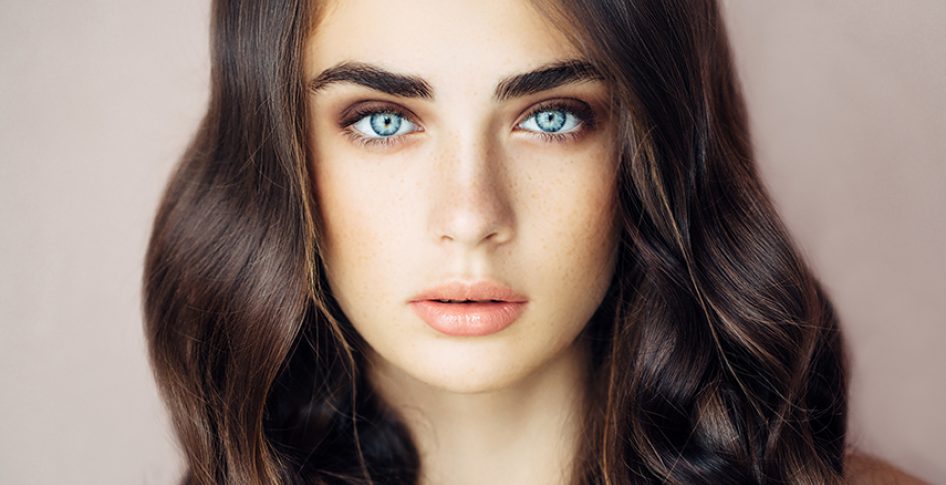The Eyes Have It--Eyelid Eczema

One of the advantages of being female, and a dermatologist, is having personal experience with many of the issues related cosmetics and skin care routines that are a problem for my female patients. Rash on the eyelids is one of them.
What's the Most Common Cause of Rash On the Eyelids and How to Get Rid of It
One of the advantages of being female, and a dermatologist, is having personal experience with many of the issues related cosmetics and skin care routines that are a problem for my female patients. Rash on the eyelids is one of them.
Rash Around the Eyes
Eyelid eczema is a rough, flakey, scaly, peeling, crusted, swollen, bright or dusky red patchy rash around the eyes, that is itchy, stinging, or irritated. It usually affects the upper eyelids and sometimes the lower eyelids. Most commonly affecting women, it makes eye makeup look unattractive and skin look wrinkled. In fact, in middle-aged or older patients, if it is severe enough and lasts for a while, it can actually make the skin wrinkle by stretching the skin so much the collagen and elastic fibers fracture.
Eye Shadow Causes Most Eyelid Eczema in Women
In my cosmetic dermatology practice, more than 90 percent of the time, the culprit that causes eyelid eczema is eye shadow.
Eyelid skin is thin and delicate. It is not designed for eye shadow. When applying eye shadow, you stretch the skin to hold it taut so the shadow goes on smoothly. When you stretch the skin, you make tiny microscopic cracks. When you make tiny little cracks, then stuff gets into the under layers of the skin that usually doesn’t. That stuff—creams, lotions, powders, colors, fragrances—all cause irritation.
Powder and cream-to-powder eye shadows are drying to the skin. To apply pencils and crayon type sticks smoothly, the skin must be stretched. The absolute worst is shimmer shadow or any eye shadow that lists mica in the ingredient list. Shimmers and iridescent shadows use mica to give shine. Mica is a sheet of reflective mineral with very sharp edges. Some are more finely ground than others, but all make microscopic cuts to the top layer of skin. Applying eye cosmetics containing mica is like rubbing little tiny glass slivers into the skin. Your eyelids don’t appreciate that.
Sponge tipped applicators worsen the problem by abrading the skin.
Using a synthetic pad, toilet paper, or Kleenex to remove eye makeup is very damaging to the delicate eyelid skin. Those products are too rough in texture and the fibers abrade the skin.
Occasionally, the rash is from a true allergic reaction to a specific color dye in the eye shadow.
Other Causes of Rash on the Eyelids
Certain topical creams or lotions, especially the retinoids Retin-A, Renova, Refissa, Tazorac or Differin, acne treatments, some anti-aging treatments, and OTC retinol can irritate the skin and cause eyelid eczema. Occasionally, the rash is from a true allergy to nail polish.
Sometimes, a rash on the eyelids may even be a sign of an underlying serious medical problem, like a condition called dermatomyositis. If your eyelids don’t respond to the suggestions below, or you are having other problems, see your dermatologist.
How to Get Rid of This Horrible Rash on the Eyelids
Stop
- Stop using eye shadow and eyeliner for 4 months. Yes, I said 4 months. It takes about 4 months to completely repair skin barrier function. If you don’t let the skin heal, you will be right back where you started. That means you don’t use any eye shadow, period. That does not mean that you just use it once or twice a week when you go out. It means you don’t use it at all. If you are not going to do that, stop reading now, and go around with yucky eyelids.
- Stop using exfoliant or astringent on your eyelids.
- Stop using anything other than a 100% cotton ball to remove eye makeup
- Stop rubbing your eyes or eyelids. Do not try to exfoliate the flakes.
- Stop using any topical antibiotic, topical antifungal cream or OTC anti-itch cream to the area.
- Stop using contact lenses for a while if you stretch the eyelids when inserting them, or rub your eyes because of them.
- Stop any lash extensions.
Use
- Use a gentle, fragrance free, hypoallergenic facial cleanser.
- Apply a fragrance free, hypoallergenic moisturizer to the eyelids twice a day and before bed.
- You can use regular mascara. You cannot use waterproof mascara.
- If the rash is persistent, try an OTC 1% hydrocortisone ointment (the maximum strength available over the counter) applied twice a day for no longer than 7 days. Use an ointment base rather than a cream base. Do not use a product with added benzocaine, Benadryl (diphenhydramine), vitamin E, menthol, pramoxine, antibiotic, antifungal or fragrance. Ask the pharmacist for help finding one without additives.
If these suggestions don’t help—see your dermatologist. Call us at 806-358-1117, 800-417-SKIN, or come by the office—Advanced Skin Treatment Center, Dr. Elaine Cook M.D., 7620 Hillside #100, Amarillo Texas, 79119.